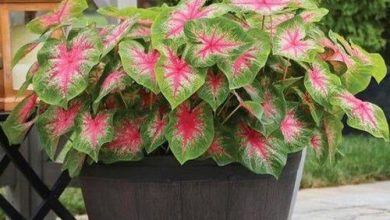Avocado Pests and Diseases: Symptoms, Control and Prevention
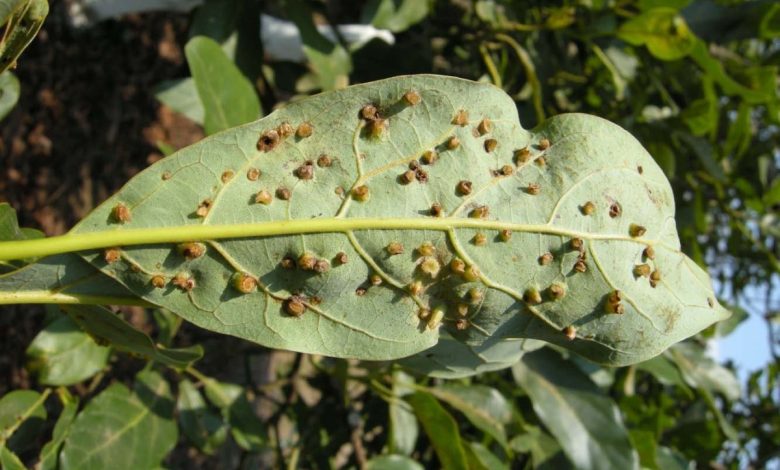
Hello farmers. In this article we are going to give you all the guidelines on how to identify the main pests and diseases that avocados can suffer from. We will also tell you what damage they can cause to the tree and the measures we can take to control and prevent it.
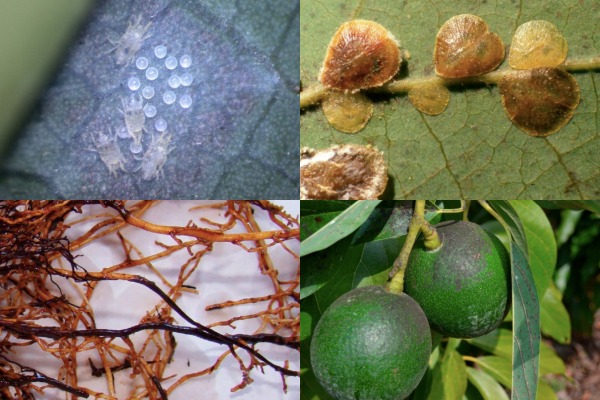
1. Avocado pests
1.1. Avocado glass mite
Oligonychus perseae, commonly known as the avocado glass mite, is the most important pest for this crop in Spain. It is a mite from the same family as the red spider, the tetranychids, and is present in all areas of the territory. This mite is yellowish in color and colonizes on the underside of the leaf, protected by a dense fabric, where it feeds while producing necrotic spots. Its period of activity can vary between May and September depending on the area where we are.
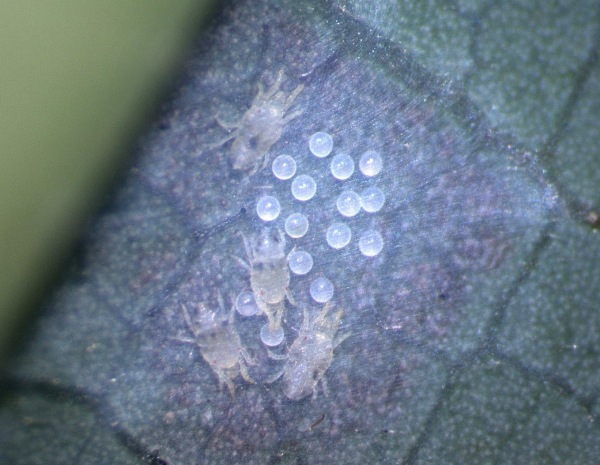
What damage does the avocado crystal mite cause?
The main damage caused by this mite is concentrated on the underside of the leaves, first producing spots on the central nerve, which will spread over the entire leaf after some time. Initially these spots will be green to darken as the leaf becomes necrotic. This necrosis will end up causing a fall of the leaves and possible burns on the fruits, although this mite does not cause direct damage to the fruits.
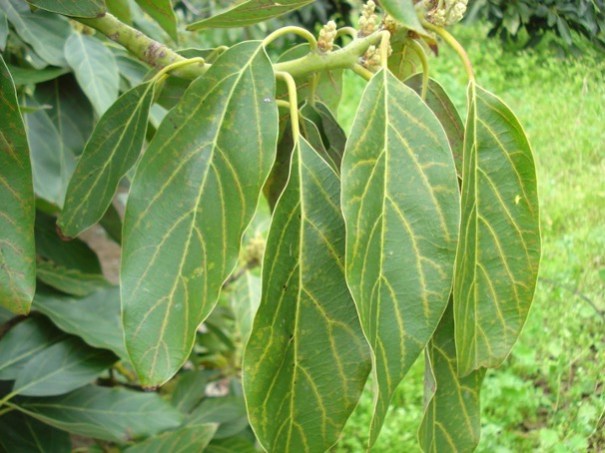
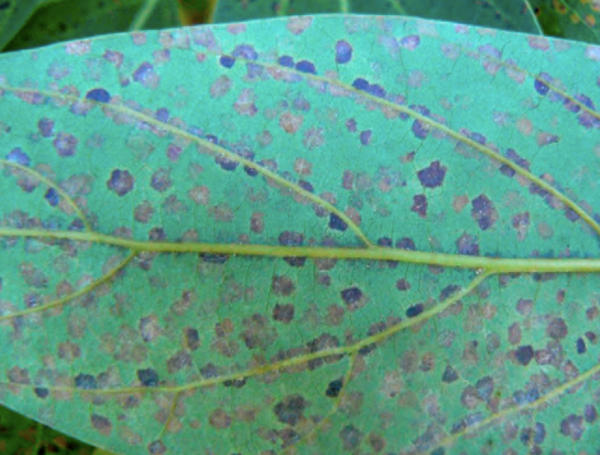
Control and prevention measures for the glassy mite of avocado
As prevention measures, the most recommended is the implementation of cover crops and/or plant reservoirs, such as grasses, which serve as a refuge and provide food for the natural enemies of this mite.
As biological control measures, natural enemies can be released. In this case, as it is a tetranychid mite, the most prominent natural enemies are phytoseiid mites, such as Neoseiulus californicus, Euseius stipulatus and Euseius scutalis.
For more information on beneficial insects and how to attract them to your garden, you can consult this article: How to attract beneficial insects: The 10 best tricks
If any chemical control measure is to be applied, it is important to check that the product is compatible with the survival of the natural enemies mentioned above.
1.2. avocado brown spider
The avocado brown spider (Olygonichus punicae), like the glassy mite, also belongs to the tetranychid family, although its importance is not as noticeable. This spider has its origin in Central America and acquires its brown color when it reaches adulthood, being its period of greatest incidence during the autumn.
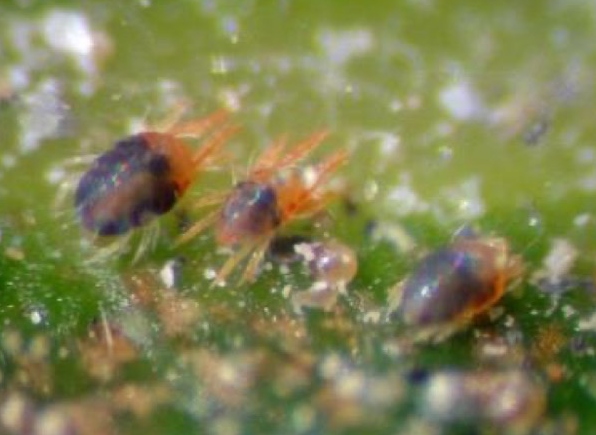
What damage does the avocado brown spider cause?
The main damage, unlike the crystalline mite, will occur in the upper part of the leaf, since it is the part where its colonization begins, normally from the central nerve to cover the entire leaf. Initially we will appreciate a discoloration of the main nerve in brown tones that will spread to the rest of the leaf.
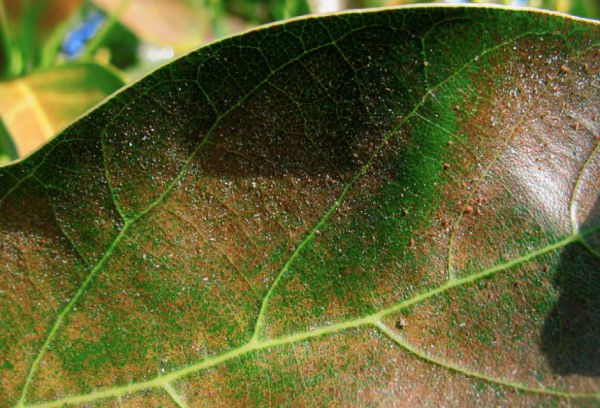
Control and prevention measures for avocado brown spider mite
The attacks of this mite are not usually very strong, so generally it will not be necessary to take any action, but rather the natural enemies themselves are capable of controlling the mite.
Although, it is important to highlight the care of the auxiliary vegetation that acts as a reservoir for natural enemies, such as phytoseiid mites, so any measure that favors their survival will be beneficial for pest control.
1.3. Piriformis Mealybug
The piform mealybug or Protopulvinaria pyriformis is a type of mealybug from America that affects numerous tropical fruit trees, such as avocado. In the juvenile stages, mealybugs are very mobile and light-toned. As they grow, they increase in size and darken to brown, with a swollen appearance, due to the fact that the adult females carry the eggs with them under their bodies.
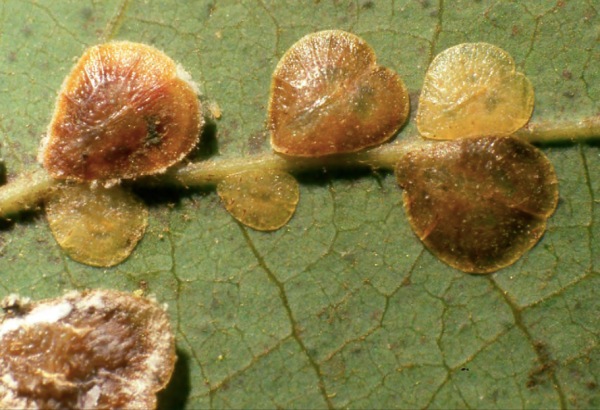
What damage does the piriformis mealybug cause?
This cochineal is going to be located in the nerves of the leaf, normally on the underside, where it will feed on the sap and cause direct damage to the tree. Although, these direct damages are not as important as the indirect ones: the cochineal, as it feeds, secretes a molasses that, on the one hand, attracts the ants and, on the other, favors the appearance of the Bold. The appearance of this disease is the most important indirect damage caused by the piriform mealybug.
Control and prevention measures for cochineal piriformis
- Favor the survival of natural enemies through auxiliary vegetation, as in the previous cases.
- Perform a balanced nitrogen fertilization
- Carry out pruning that allows proper aeration
- In the event that the mealybug population increases too much, parasitoids of the genus Metaphycus and predators such as Cryptolaemus montrouzieri and Chrysoperla carnea can be released.
- control ant populations
1.4. Avocado spiny mealybug or coconut mealybug
The avocado spiny mealybug is a hemiptera called Nipaecoccus nipae, which affects numerous species of tropical trees and is widely distributed throughout the world. It can develop throughout the year, so it can appear at any time.
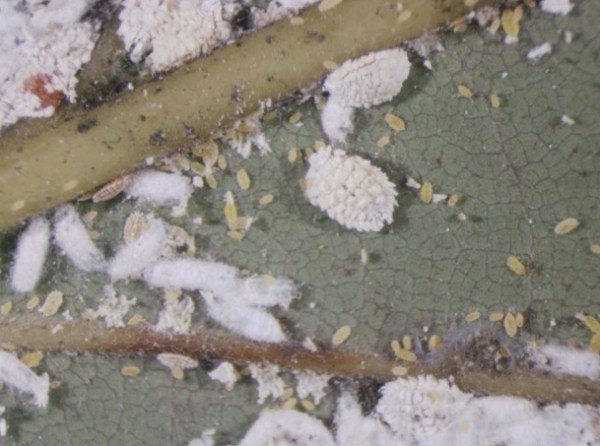
What damage does the spiny mealybug cause?
The females feed on the sap while secreting molasses, normally located in the nerves on the underside of the avocado leaves. Although, as in the case of the pyriform mealybug, the direct damage caused by this hemiptera will not be as serious as the indirect or secondary ones, since it can give rise to the appearance of fungi such as Cladosporium or Negrilla, which can cause serious damage. In addition, the secretion of molasses can induce the appearance of ants that will use it as food and protect the mealybugs from their natural enemies.
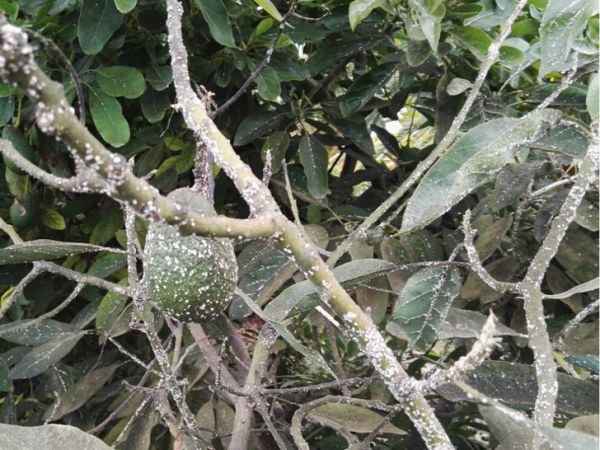
Control and prevention measures for the spiny mealybug
The control and prevention measures will be similar to those of the piriform mealybug:
- Favor the survival of natural enemies through auxiliary vegetation, as in the previous cases.
- Perform a balanced nitrogen fertilization
- Carry out pruning that allows proper aeration
- In the event that the mealybug population increases too much, parasitoids of the genus Metaphycus and predators such as Cryptolaemus montrouzieri and Chrysoperla carnea can be released.
- control ant populations
1.5. avocado gall
Avocado gall is a pest caused by the hemiptera Trioza anceps which, as its name suggests, causes the appearance of galls on the leaves of the tree. In Spain there is no evidence of this plague but in countries such as Mexico and Guatemala it is frequent.
What damage does the avocado gall cause?
The females lay their eggs on the leaves of the avocado and, after hatching, the young feed on the sap, producing galls or bumps on the leaves. In addition, the nymphs will remain housed in them until they complete their cycle of life, using them as protection against predators. At first they will be green tones and, over time, they will increase in size and darken.
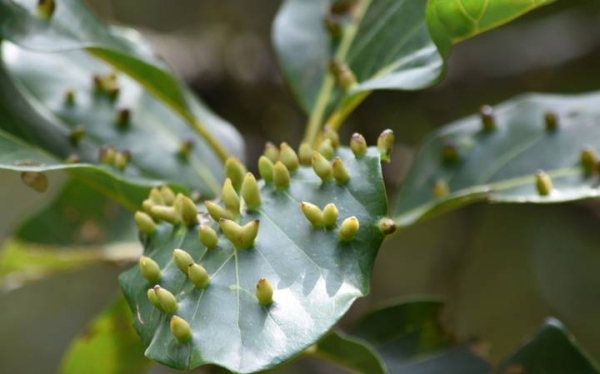
Control and prevention measures for avocado gall
The main measure to follow when we have evidence of this pest in our orchard will be to eliminate and burn the affected leaves.
As in the pests described above, it will always be positive to favor the presence of natural enemies through auxiliary vegetation.
Lastly, calcidoid or aphelinid hymenopteran parasitoids could be released.
1.6. thrips
In Spain, the species Heliothrips haemorrhoidalis stands out in avocado, although there are many other species such as Scirtothrips perseae, Liothrips perseae or Frankiniella occidentalis.
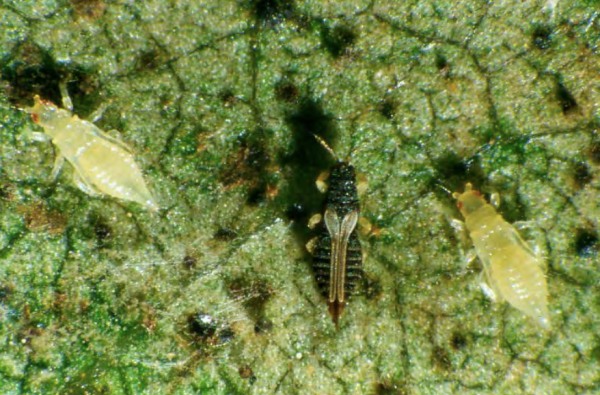
What damage do thrips cause in avocado?
Thrips feed on both the leaves and the fruits, producing grayish or brown spots. They can also produce the inhibition of the fertilization of the flowers and, therefore, reduce the formation of fruits.
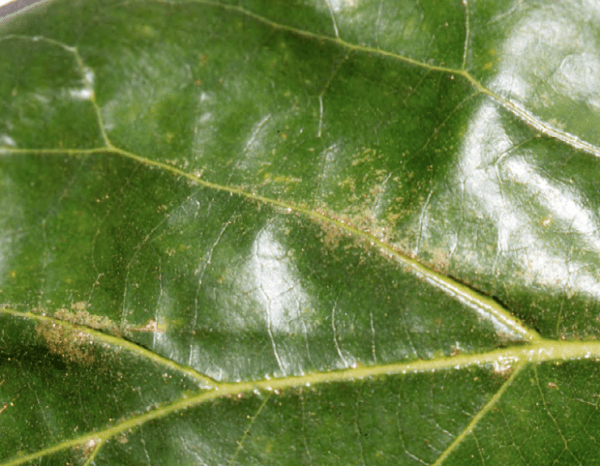
Thrips control and prevention measures
Carrying out thinning pruning, which allows light to enter the less illuminated areas of the tree, since they are normally the preferred places for thrips
In Spain, it is not usually necessary to intervene, since the native fauna exerts sufficient control. However, natural enemies such as phytoseiid mites (Amblyseius swirskii), anthochorid bugs (Orius laevigatus) and mirids and thrips (Aeolothrips and Franklinothrips) can be released.
2. Avocado diseases
Diseases are plant health problems, caused mainly by fungi, and also by bacteria and viruses.
2.1. Phytophthora
Phytophthora cinnamomi is a fungus that produces the disease known as sadness or root rot, which affects numerous species. This fungus lives in the soil and causes damage to the roots of plants, feeding on them and, in many cases, causing the death of the plant.
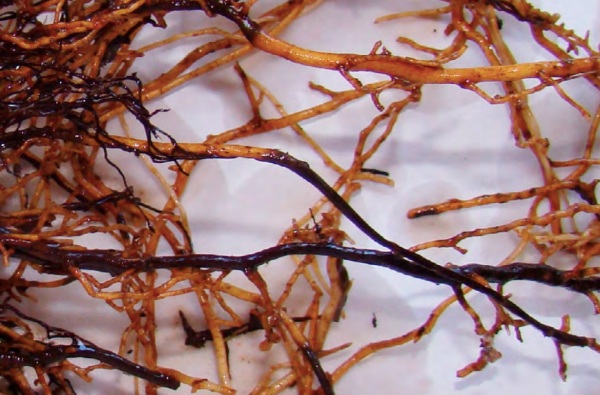
What damage does Phytophthora cause in avocado?
The tree will begin to take on a general wilted appearance. We will observe leaves that are smaller than normal and of a more yellowish color. If the disease continues to progress, the tree will dry out more and more, and may even lead to death.
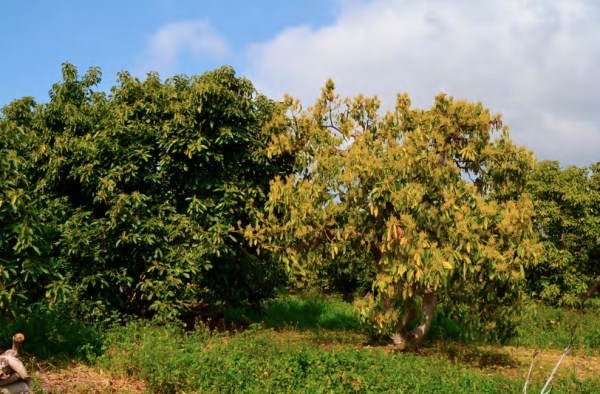
Phytophthora control and prevention measures
Once a soil is contaminated with this fungus, its elimination is almost impossible, so most measures are focused on prevention:
- Avoid waterlogging and excessive humidity
- Add mulching or organic matter to the topsoil to enhance root development
- Realization of solarization practices
- Prune affected trees, subsequently disinfecting the utensils used
- improve drainage
- In soils with a high clay content, ridges can be made to avoid waterlogging.
2.2. Rosellina
Rosellina necatrix is a fungus that produces what is known as white root rot, a disease that will also cause damage to the root system of plants and that affects numerous species.
What damage does Rosellina produce in avocado?
On the one hand, this fungus will cause damage to the roots in the form of white, cottony-looking spots. The wood will darken and take on a necrotic appearance.
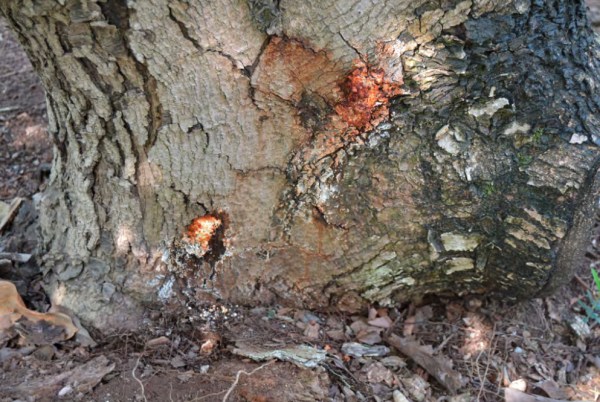
On the other hand, the leaves of the tree acquire more yellowish tones as they wither, but they will remain attached to it.
Rosellina control and prevention measures
- If in our orchard we have previously had a tree that is also prone to this disease and we want to plant the avocado in the same place, we will have to wait a while to plant it, since it is very likely that there are still remains of the fungus. In addition, it will be necessary to remove any plant remains from the previous plant from the soil.
- As we already commented in the article How to grow Avocado (Avocado or Avocado): Complete guide, if our orchard has a tendency to flooding, it will be more likely to develop this type of disease.
- Use of rootstocks tolerant to Rosellina
- Use soil solarization techniques, as in the case of Phytophthora.
23. bold
Bold, also known as sooty mold, is a disease caused by fungi of the genus Capnodium, which normally appear due to the molasses secreted by pests such as mealybugs.
What damage does the Negrilla cause in the avocado?
The Bold can appear both in leaves, as in branches and fruits, appreciating a black powder that falls if we scratch it.
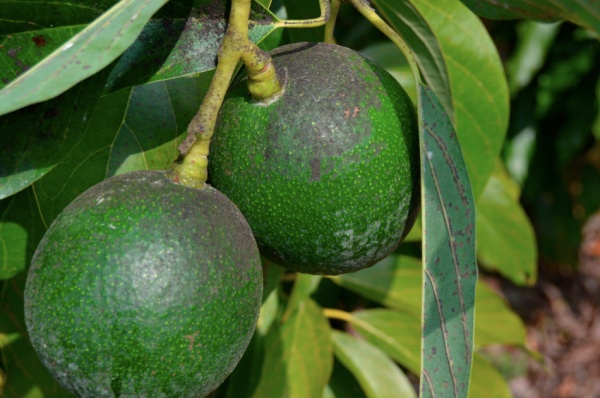
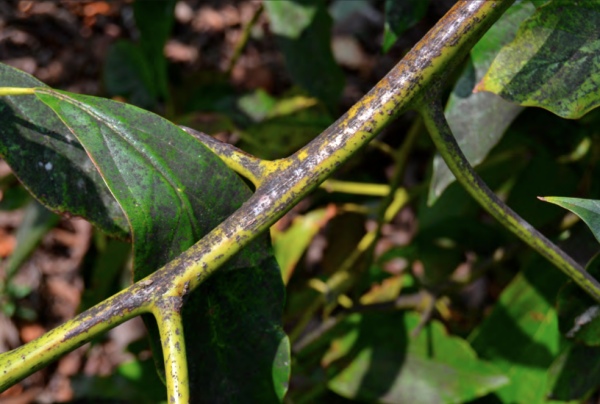
Control and prevention measures for Bold
The main control measure is aimed at controlling the pests that cause it and which, in the case of avocado, would be the spiny mealybug and the pear-shaped mealybug, described in point 1.3. and 1.4. of this post.
Once the disease has been contracted, all infected branches or parts should be removed.
2.4. anthracnose
Anthracnose is the disease caused by the fungus Colletotrichum gloeosporioides, present above all in tropical areas where high temperatures and humidity favor its development.
What damage does Anthracnose cause in avocado?
The symptoms will be observed mainly on the leaves, with young trees being especially vulnerable. The leaves have reddish or orange colored spots with necrosis. It can also cause the fall of the flowers and hinder the formation of the fruits.
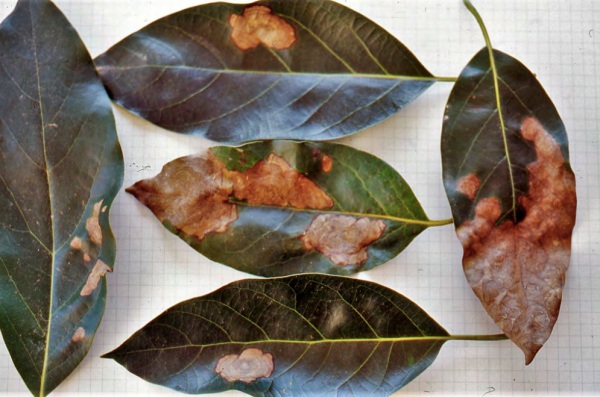
Anthracnose control and prevention measures
The main measures are focused on prevention, carrying out pruning that improves aeration in the treetops with the subsequent sealing of wounds and the elimination of plant debris, where the fungus could still proliferate
2.5. vertilcillosis
Verticillium wilt is the disease caused by fungi of the genus Verticillium that inhabit the soil and that its appearance is favored by excess moisture and waterlogging.
What damage does verticillium wilt cause in avocado?
The fungus enters the tree almost exclusively through the roots, although, to a lesser extent, it could also access through the aerial part, for example, through a wound in the branches. This will cause a slowdown in the development of the tree and a decrease in its size.
In addition, we will observe how the leaves of the infected branches will present a yellowing from the tip to the part closest to its union with the branch and, over time, they will dry out.
If the disease continues to progress, when making a cut in one of the main branches, we will observe something similar to what the following image shows:
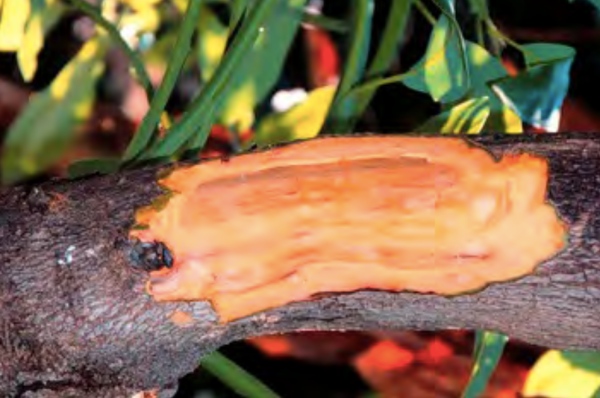
Verticillium wilt prevention and control measures
There is no 100% effective treatment that will eliminate this disease once it is present in the tree. Therefore, most of the measures are focused on prevention:
- Prevent waterlogging and improve drainage
- Maintain a balanced nutrition, especially avoiding phosphorus and potassium deficiencies.
- soil solarization
2.6. Botryosphaeria
Botryosphaeria is a disease caused by fungi of the Botryosphaeriaceae family, which spread through the air and affects many plants, affecting leaves and branches.
What damage does Botryosphaeria produce in avocado?
The leaves will present necrosis at the apex, which will progress to the entire leaf, until it dries completely. If the disease continues to progress, cankers and whitish spots will appear on the outside of the trunk.
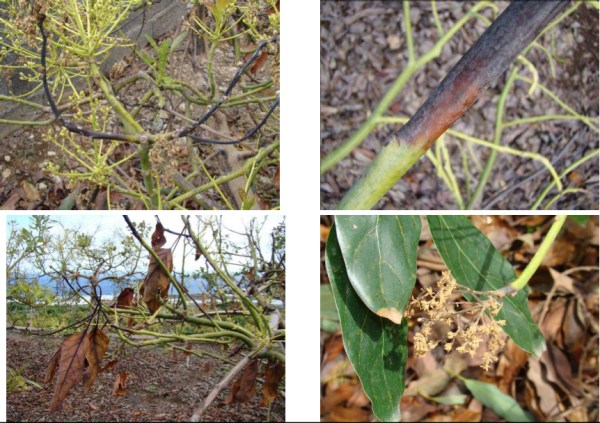
Botryosphaeria control and prevention measures
As in previous cases, most measures are aimed at prevention, since once the disease appears, treatment will not completely eliminate it.
- A good way to control this disease is through selective pruning, removing debris as soon as possible to prevent the fungus from being transmitted again by spores.
- Another practice is to avoid high relative humidity, for example by eliminating weeds and drip irrigation in a controlled manner, to avoid waterlogging.
- Use irrigation water with low salt content
- Use of contact fungicides or healing products to treat pruning wounds.
- Copper Oxychloride Applications
3. Bibliographic references
- Cardemil, A., Gardiazabal, F., Guajardo, V., Hoddle, M., Larral, P., & Luppichini, P. et al.Management of pests in avocado and citrus. INIA Book Collection ( 23). Chilean Ministry of Agriculture, https://biblioteca.inia.cl/bitstream/handle/123456789/3509/Libro%20Manejo%20de%20plagas%20y%20c%C3%ADtricos%20%28Copia%20partial%29.pdf
- Hernández, E. (2017) The crystal spider Olygonichus perseae. The Palm. Canarian Institute of Agricultural Research http://canalagrariolapalma.com/pdf/Aguacate%20la%20araña%20crystalline.pdf
- Ministry of Agriculture, Fisheries and Food. (2021).Integrated Management of Avocado Pests. Madrid: MAPA Publications Center.https://www.mapa.gob.es/es/agricultura/temas/sanidad-vegetal/aguacate_web_tcm30-560993.pdf
- Perera, S. (2018) Avocado pests and diseases: identification and control. The Palm. Technical Service of Agriculture and Rural Development of the Cabildo Insular de Tenerife.https://canalagrariolapalma.com/pdf/2018%20aguacate/plagas-aguacate.pdf
- Ripa S, Renato and Larral D, Pilar (eds.) (2008) Pest management in avocado and citrus. Quillota: Version-Producciones Graficas Ltda.. INIA Books Collection – Agricultural Research Institute. No. 23. https://www.mapa.gob.es/es/agricultura/temas/sanidad-vegetal/aguacate_web_tcm30-560993.pdf

![Photo of Lantana: [Cultivation, Care, Irrigation, Substrate, Pests and Diseases]](https://www.complete-gardening.com/wp-content/uploads/2022/08/lantana-cultivation-care-irrigation-substrate-pests-and-diseases-390x220.jpg)
![Photo of Gardenia Care: [Earth, Strengthening, Humidity and Pruning]](https://www.complete-gardening.com/wp-content/uploads/2022/08/gardenia-care-earth-strengthening-humidity-and-pruning-390x220.jpg)
![Photo of Holly: [Planting, Care, Irrigation, Substrate, Pests and Diseases]](https://www.complete-gardening.com/wp-content/uploads/2022/08/holly-planting-care-irrigation-substrate-pests-and-diseases-390x220.jpg)
